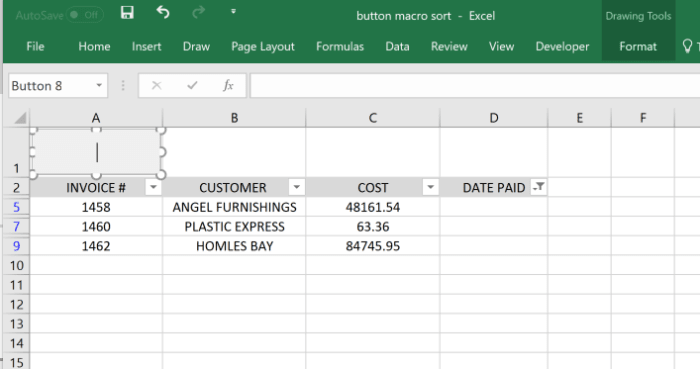

- #How to add a drop down menu in excel 2016 how to
- #How to add a drop down menu in excel 2016 full size

You need people to stick to the menu of choices to make your analytic life much easier. You might wind up with “Yes”, “1”, “True”, “Y”, “T”, and who knows what else. You don’t want to have to deal with multiple variations of “yes”, for example. And, you have a column or range of cells that need to have values from a specific set of values. Sometimes you have a sheet that you need other people to fill in.
#How to add a drop down menu in excel 2016 how to
In the next part, you'll learn how to add a Spin Button control to an Excel cell.Two ways to add a drop down list in Excel When you're finished, the Subject column should look like this:Īnd the Grade column should look like this: Make sure that the cells B1 and C1 don't contain drop down lists. The B column should contain lists of Subjects, and the C column a list of Grades. And it means that typing errors won't creep in to your work.Īdd drop down list to the B and C columns. Click any other cell in the A column and you'll see the same list.Īdding a drop down list to your cell can save you a lot of time. Select an item on your list to enter that name in the cell. Click inside cell A2, and you'll see a down-pointing arrow: The rest of the column will still have drop down lists, though. From the Allow list, select Any Value:Ĭlick OK on the Data Validation dialogue box, and your drop down list in cell A1 will be gone. Click the Data Validation item on the Data Tools panel again to bring up the dialogue box. To get rid of it, click inside of cell A1. However, you don't want a drop down list for your A1 column heading.
#How to add a drop down menu in excel 2016 full size
You'll then be returned to the full size one, with your cell references filled in for you:Ĭlick OK, and you'll see the A column with a drop down list in cell A1: Once you have selected your data, click the same icon on the Data Validation dialogue box. Now select the cells on your spreadsheet that you want in your list. When you click this icon, the Data Validation dialogue box will shrink: To let Excel handle the job, click the icon to the right of the Source textbox: You can either just type in your cell references here, or let Excel do it for you.

Source means which data you want to go in your list. Select List from the drop down menu, and you'll see a new area appear: To create a drop down list, click the down arrow just to the right of "Allow: Any Value" on the Settings tab: When you click Data Validation, you'll see the following dialogue box appear: On the Data Tools panel, click on the Data Validation item. From the Data tab, locate the Data Tools panel. With Column A highlighted, click on Data from the Excel Ribbon at the top. Now click on Column A to highlight that entire column: The data in Columns F, G and H above will be going in to our list.
:max_bytes(150000):strip_icc()/create-drop-down-list-in-excel-R1-5c1a6605c9e77c0001cbfb02.jpg)
But don't type anything in columns A, B, C or E: It doesn't need to go in the same columns as ours. So, type the same data as in the image below. We now need some data to go in our lists. So, create the following headings in a new spreadsheet: In the image above, we can simply select a student from the drop down list - no more typing! We can also do the same for the Subject and Grade. Here's a picture of your finished spreadsheet: We only have to click a cell in the A column to see this same list of students. In the example below, we have a class of students on a drop down list. In Excel, this comes under the heading of Data Validation. If you have to type the same data into cells all the time, then adding a drop down list to your spreadsheet could be the answer.


 0 kommentar(er)
0 kommentar(er)
